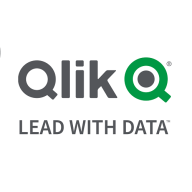

Find out in this report how the two Cloud Data Integration solutions compare in terms of features, pricing, service and support, easy of deployment, and ROI.
I conducted a cost comparison with the AWS service provider, and this option is much cheaper than the Kinesis service offered by AWS.
Customers have seen ROI with Qlik Replicate because they get their data for analysis faster, enabling quicker decision-making compared to traditional data sourcing methods.
In a scenario where employing three resources for three months might cost approximately $18,000 to $20,000, Zapier provides substantial cost savings.
Even priority tickets, which should be resolved in minutes, can take days.
Support response times could be improved as there are sometimes delays in receiving replies to support cases.
Their technical support is good; they respond promptly and are very helpful.
This can help if you need assistance, as you can communicate with the community and support system, and most issues are already resolved by AI.
Sometimes, in my early days, when I was stuck with something, they helped me solve these issues, and even helped me solve some of my automations.
The system could be scaled to include more sources and functions.
Zapier is suitable for small or simpler automation but not for complex ones.
Scaling it gets quite expensive, and while I cannot evaluate it purely from a technology perspective, compared to Workato, I would give Zapier a seven for scalability.
In my current company, we had significant challenges with Zapier regarding maintenance, as Zaps were often broken, not necessarily due to Zapier, but due to changes in the input variables.
It is a core-based licensing, which, especially in the banking industry, results in the system capacity being utilized up to a maximum of 60%.
Qlik Replicate could be improved in the next release by incorporating more monitoring options to monitor the logs.
The error message options in the dashboard should be improved. It should be user-friendly so that beginners or non-technical users can figure out the problems and solutions on their own.
You can build similar or dependent automations in one Zap, which helps with understanding the process without switching between different records.
I would appreciate if there would be a feature where we can use actions right after loops. Currently, you cannot use any other action after the loop. Everything needs to be within the loop.
Licensing is calculated based on the machine's total capacity rather than actual usage.
For Qlik Replicate, the setup cost includes the requirement of a server, which represents the hardware cost that must be covered.
The pricing is in accordance with market standards and even lower in some cases.
The pricing of Zapier is slightly higher compared to other market automation tools such as Pabbly, Make.com, and N8N, which have good features but are priced lower than Zapier.
The most valuable feature of Qlik Replicate is their change data capture feature.
Data retrieved from the system can be pushed to multiple places, supporting various divisions such as marketing, loans, and others.
They have approximately 7,000 connections.
Even a person with no technical knowledge can use Zapier to create automations.
The automation capabilities are impressive.


| Company Size | Count |
|---|---|
| Small Business | 9 |
| Large Enterprise | 10 |
| Company Size | Count |
|---|---|
| Small Business | 29 |
| Midsize Enterprise | 10 |
| Large Enterprise | 7 |
Qlik Replicate is a data replication solution for replicating data from one source database to another for business intelligence software. It offers data manipulation and transformations, replication without impacting source databases, and ease of use without needing ETL. The solution is stable and user-friendly, with detailed logging and support.
Qlik Replicate has improved the organization by allowing each team to replicate their data into a single-source data location. The most important feature of Qlik Replicate is its ability to replicate and update records without needing a programmer.
Zapier is a tool for primarily non-technical users to connect together web apps.
An integration between two apps is called a Zap. A Zap is made up of a Trigger and one or more Actions or Searches.
Whenever the trigger happens in one app, Zapier will automatically perform the actions or searches in another app in order.
Zaps are very lightweight and easy to set up. Zaps do not import or export old data (they only operate on new items created after the Zap is enabled). Zaps are also not kept in sync ("two way syncing") after the Zap is triggered.
Zaps are deceivingly simple if you're used to dealing with complex and difficult integrations. Their simplicity is what enables anyone to create them.
We monitor all Cloud Data Integration reviews to prevent fraudulent reviews and keep review quality high. We do not post reviews by company employees or direct competitors. We validate each review for authenticity via cross-reference with LinkedIn, and personal follow-up with the reviewer when necessary.